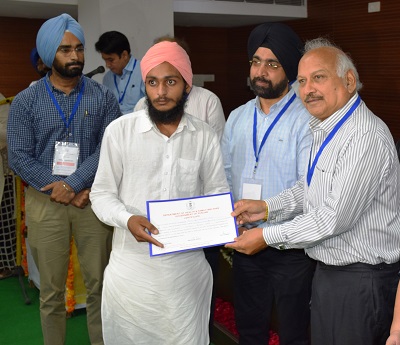
An estimated 325 million people worldwide live with chronic hepatitis B or hepatitis C infection; a large majority of them lack access to life-saving testing and treatment. A slow progression to chronic liver disease, cancer and death is almost inevitable.
In India, around 40 million people are infected with hepatitis B and at least 6 million people with hepatitis C. About 184 000 people die each year of hepatitis B- and C-related complications – two times the estimated annual number of HIV and malaria deaths together.
A pilot in India, the Mukhya Mantri (Chief Minister’s) Hepatitis-C Relief Fund in Punjab, however, offers hope. WHO provided advice on the treatment model and the introduction of re-use prevention (RUP) syringes.
Until now, access to HCV treatment has been limited globally and also in India. Direct-acting antivirals (DAAs) have been a breakthrough new medication for the treatment of patients with chronic hepatitis C. Since they came to market in 2013, sofosbuvir, daclatasvir and other DAAs, with a cure rate above 90%, have been out of reach of consumers in both, developed and developing countries, largely as a result of their price. With India producing generic DAAs, the treatment is now available at affordable prices.
Currently, the Punjab government offers a 12 week treatment course with DAAs approximately under USD 100, perhaps the lowest in the world. While treatment costs USD 84 000 in the United States, in Egypt, generic competition reduced the price of a 3-month cure for hepatitis from US$900 (2014) to US$180 (2015).
A decentralized service delivery model at district level was established with capacity-building and mentoring by hepatologists from tertiary hospitals using ECHO clinics and WhatsApp group. Based on WHO recommendation, patients are systematically registered, monitored and issued a certificate on successful treatment and elimination of the hepatitis C virus.
Hepatitis C treatment is now affordable, both at the individual level in Punjab and also for the government. Since it was established in June 2016, over 40 000 patients have started free hepatitis treatment and care, with a cure rate of more than 92%.
However, treatment alone is not enough; prevention is equally vital. To this end, WHO has assisted the Punjab government in developing an injection safety programme. A baseline situation assessment of injection practices was conducted. A technical expert group was also established and an operational road-map developed for injection safety and healthcare waste management. As a result, Punjab successfully introduced RUP syringes in all public facilities on World Hepatitis Day 2017.
Six Indian companies now manufacture this technology and enhanced production capacity will further boost Prime Minister Modi’s ‘Make in India’ initiative.
WHO has documented and leveraged the experience and lessons learned from the Punjab hepatitis C prevention and treatment initiative to inform the development of a comprehensive National Action Plan for Viral Hepatitis in India, along with free treatment being considered by Government of India.
This comprehensive programme will prevent new infections and save the lives of hundreds of thousands of people across the country. This is a triumph for public health that will help advance the SDG agenda.
Punjab and India’s efforts to tackle hepatitis are part of a Region-wide push to eliminate the disease as a public health threat by 2030. As part of this, in 2017, WHO South-East Asia Region intensified the battle against hepatitis and appointed Indian film star Amitabh Bachchan WHO Goodwill Ambassador for the disease.
